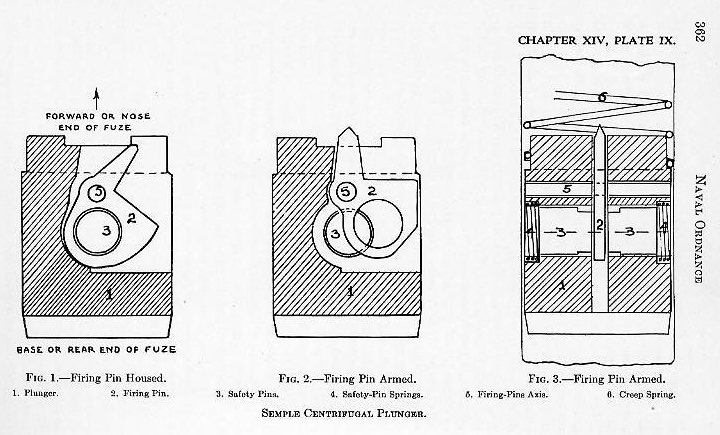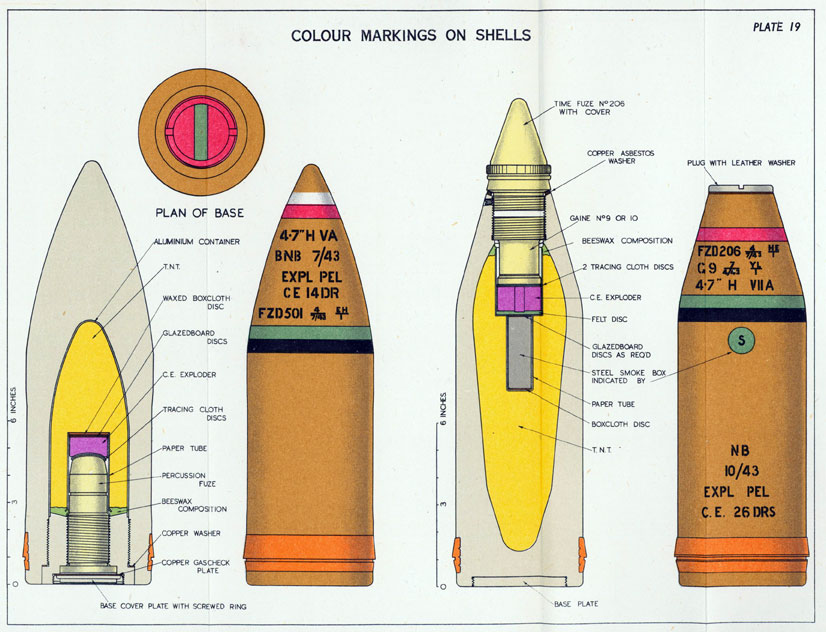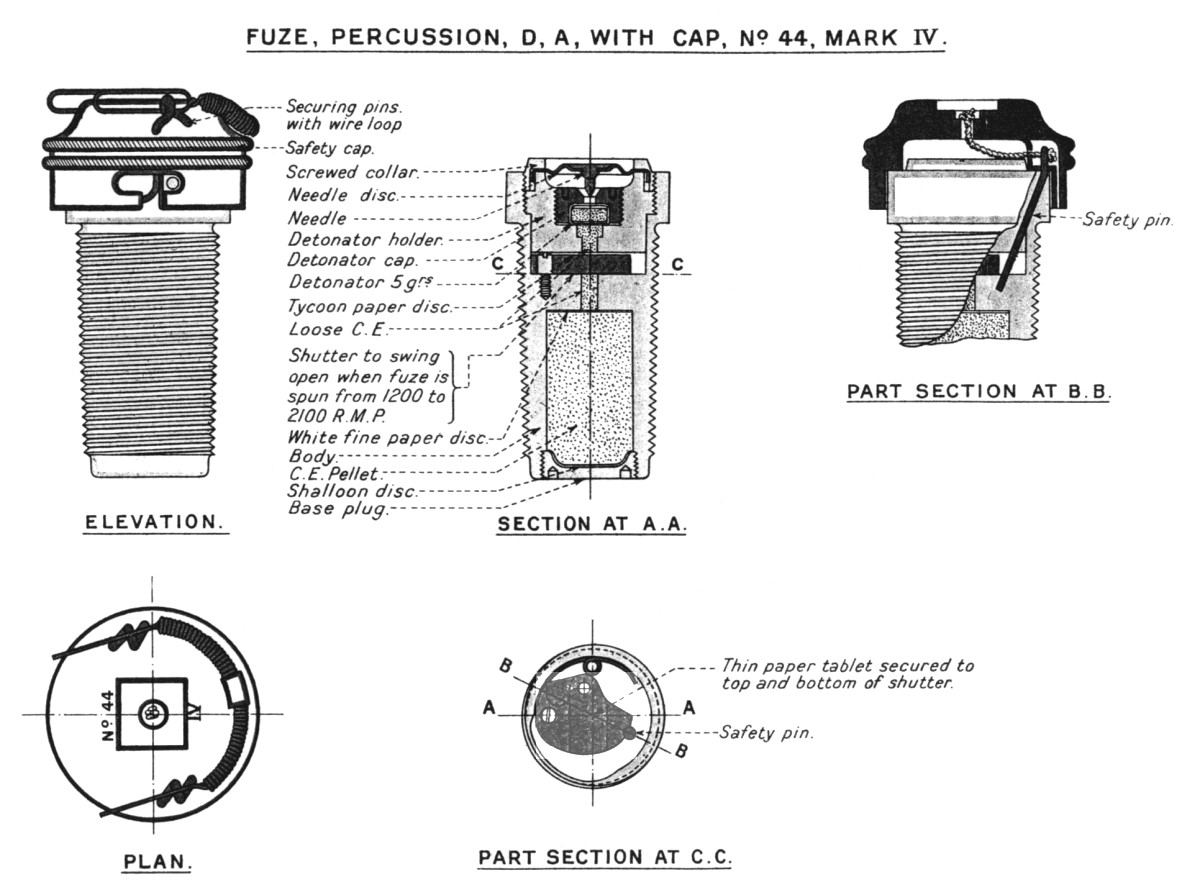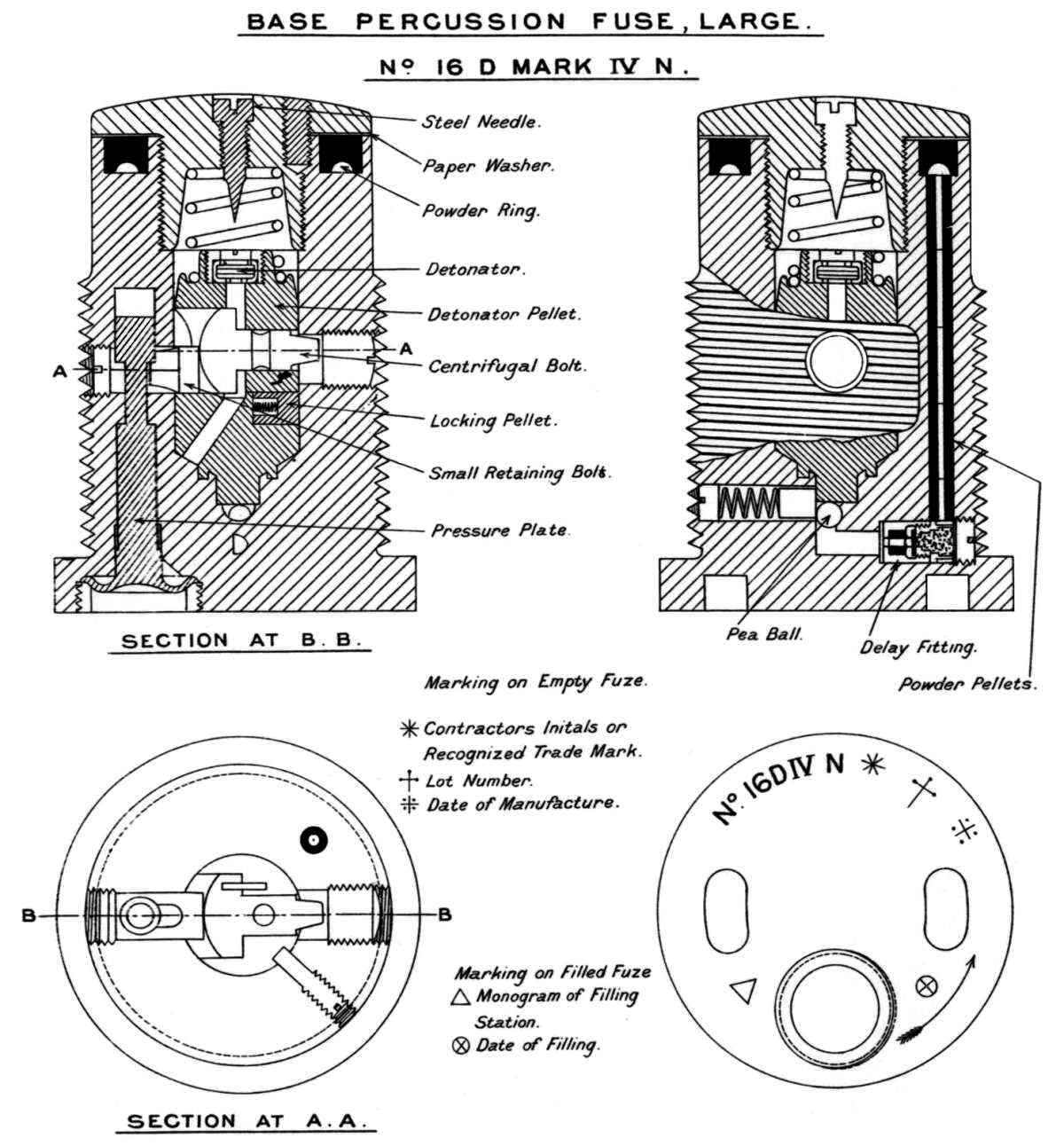Any explosive shell requires some mechanism to set it off, preferably on impact. Early shells had been forced to use time fuzes thanks to the difficulty of designing a safe impact fuze for a round shell that might strike in any orientation, but after the introduction of the rifled gun, it was possible to make a fuze that was generally safe until it was fired and set off the shell immediately upon impact. But they generally relied on a pin or wire that sheared on firing to keep the striker from setting off the detonator, and it was entirely possible that if the fuze was struck or dropped, the strike would break loose. Orders were given to disarm and discard any fuze which was struck or dropped, but the possibility of accident was never too far away.

The solution was to look at the various forces imposed on a shell when it was fired. The shock of firing, known as setback, had been used from the start, but it could be duplicated by accidents. Harder to duplicate was the centrifugal force produced by the shell's spin,1 because it pushed on different parts of the shell differently. The solution was to restrain the striker with two or more spring-loaded safety pins,2 so that even if a shock was to temporarily dislodge one pin, the other(s) would remain in place. The fuze pictured above has a secondary centrifugal safety feature in the form of a separate firing pin, which is normally concealed within the striker and held in place by the safety pins. When fired, the setback holds it concealed within the striker, and after it leaves the muzzle, the centrifugal force swings it into the unlocked position, a device to make the fuze "boresafe". Also worth noting in this fuze is the creep spring, which is designed to counter the force produced by air resistance on the shell and keep the striker at a distance from the primer until the shell actually hits something.3

Shells with base (left) and nose fuzes
These kind of fuzes, known as impact fuzes, were operated by the inertia of the shell slowing down as it struck the target and were universally installed in the base of the shell, where the shell body would protect it from damage, and where it wouldn't weaken the nose of armor-piercing shells. But the base of the shell wasn't a particularly good place to put a time fuze, so most non-AP shells had a second fuze slot in the nose, which could be closed off with a steel plug if the base fuze was used, or have either a time fuze or a so-called point-detonating fuze installed. Point-detonating fuzes were designed to deal with one of the problems of the impact fuze: because they were operated when the shell slowed down, a heavy shell hitting a thin plate or other lightweight target might well pass through without the fuze activating. This was a serious problem when the thin plating belonged to a destroyer that you would very much like to kill with your battleship's guns, and a point detonating fuze solved the problem by having a mechanism where only the tip of the shell had to be slowed down to detonate. Time fuzes were retained primarily for shrapnel shells, used for shore bombardment and as a potential counter to attack by small craft, at least until the development of the aircraft prompted their widespread use in AA guns.

A nose impact fuze
Fuze development around the dawn of the 20th century was largely driven by developments in explosives. Many early shell fillings, such as black powder and picric acid, were very sensitive, making the shells quite easy to set off, to the point that they would often explode on impact even without a fuze.4 This was a serious problem on a target as big as a warship, as the explosion would be somewhere on the outside instead of in the creamy center, but there was no way around it until less sensitive fillings like TNT were developed. But their lack of sensitivity made the designer's life more difficult. Traditionally, a fuze had used a small amount of very sensitive explosive, detonated on impact, to set off a larger "detonator" charge of less sensitive explosive which in turn would set off the main charge.5 But to do this with TNT would have required an infeasibly large detonator charge. Both safety6 and the need for good ignition meant that it needed to stay about the same size, so a "booster" or "gaine" of intermediate sensitivity and size was added to the fuze train. Now the primer would set off the detonator which in turn would trigger the booster and then finally the main filling. Some nations were quicker than others to develop such fuzes, and through WWI they tended to be somewhat unreliable.7 The British and Japanese ended up rejecting TNT as a filler because they thought the required fuzes were too complex, staying with picric acid despite its many problems.8

A British post-Jutland delay fuze, with the plunger visible
But with the problem of shells detonating on impact solved, a delay-impact fuze was finally possible, and the first one entered German and Austrian service in 1911, thanks to an agreement between Krupp and Skoda. It was essentially a standard TNT fuze, fitted with a black-powder delay of about 0.025 seconds (enough for the shell to get 15 m or so past the point of impact) between the detonator and the booster. Unfortunately, the design wasn't quite right, and the detonator was quite powerful (in an attempt to solve the problem of duds that were actually caused by an inadequate picric acid booster) and unchanged from the original design, which meant that it frequently either blew through the delay and set it off immediately or damaged things enough that the shell didn't go off. The Germans attempted to solve this in the obvious way (to them, at least), installing a long corkscrew between the detonator and the delay, but this wasn't particularly effective, and a lot of their shells were duds. The obvious solution to the rest of us, weakening the detonator, would have to wait. The British, who captured a number of these shells at Jutland, incorporated a delay fuze into their "Greenboy" shells, but with a more reasonable detonator. This fuze had an interesting property, in that it could be set to either delay or instant operation before it was fired. In delay mode, the fuze had an open base and a piston that was pushed by the propellant gasses, routing the detonation through the delay pellet. A small disc could be screwed into the base, preventing the piston from moving and leaving the direct route open, which meant the fuze would detonate in .003 seconds instead of .025 seconds.
Next time, we'll take a look at the world of fuzing in the interwar years and WWII, as fuzes got safer and more sophisticated and aircraft raised entirely new problems for their designers.
For more details on fuzing in this era, see here and here.
1 Yes, physics pedants, this is an imaginary force in the normal frame of reference, as indeed is setback. But fuze designers are engineers instead of physicists, so they tend to use the most useful reference frame, which is that of the shell itself. And relativity says you can't tell them that they're wrong. ⇑
2 Or any number of other mechanisms which would only open up under centrifugal force. There were a lot of different designs. ⇑
3 This diagram appears to be based on the US Mk 10 base fuze. The design was phased out because the firing pin, held in place only by centrifugal force, is easily knocked out of alignment during oblique impacts, resulting in a dud shell, but it works well as an illustration of basic fuze principles. ⇑
4 In a few cases, shells had no fuze and would rely on this effect instead. ⇑
5 This isn't always true, and in some cases the primer and detonator are the same thing, depending on the detailed design of the fuze. ⇑
6 Explosive sensitivity is dependent on the size of the charge. ⇑
7 Or, in the case of Germany, through the end of WWII, because Krupp never got around to replacing the basic picric acid booster. ⇑
8 The Japanese spent the 20s attempting to cushion picric acid charges and failing. They ultimately filled their shells with the slightly more stable trinitroanisol, which was technically more powerful than everyone else's explosives, but required 30-40% the shell's interior to be cushioning to keep it from going off on impact. It is unclear what the point of this was. ⇑

Comments
I don't know why phrasing this way was so funny to me. "We have captured a number of enemy shells. Please help: we are sinking"